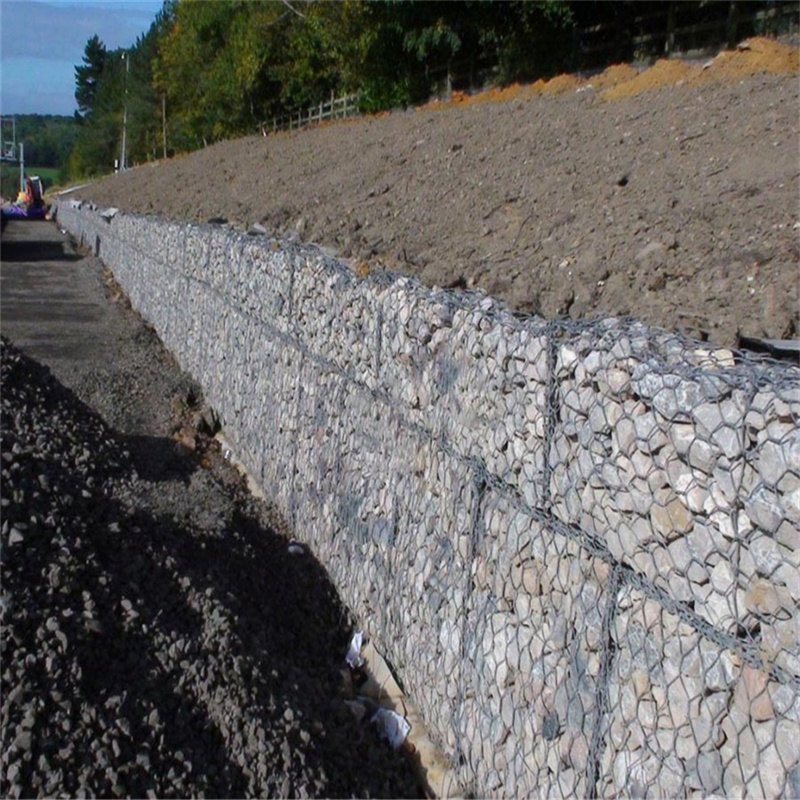Aug . 12, 2024 09:08 Back to list
Creating a Stylish Gabion Fence for Your Property Using Wholesale Building Materials
Building a Gabion Fence A Comprehensive Guide
When it comes to enhancing the aesthetic appeal and security of your property, a gabion fence is a practical and stylish choice. Made from wire mesh and filled with stones, concrete, or even recycled materials, gabion fences offer a unique blend of form and function. In this article, we will delve into the benefits of gabion fences, their construction process, and tips for sourcing materials wholesale.
Understanding Gabion Fences
Gabion fences have been gaining popularity due to their versatility and environmental friendliness. They can serve various purposes, from privacy barriers to retaining walls. The rock-filled cages not only create an attractive look but also provide excellent drainage, making them ideal for areas prone to erosion. Moreover, they can withstand harsh weather conditions, which adds to their longevity.
Advantages of Gabion Fences
1. Durability Unlike traditional wooden fences that can rot or metal fences that may rust, gabion fences are incredibly durable. The combination of wire mesh and stone can last for decades with minimal maintenance.
2. Aesthetic Appeal Gabions can be filled with a variety of materials, allowing for customization. Depending on your preferences, you can choose colored stones, recycled glass, or even mixed materials to create a visually stunning feature in your landscape.
3. Eco-friendliness For environmentally conscious homeowners, gabion fences can be an excellent choice. They can be constructed with locally sourced materials and often utilize recycled content, reducing the overall ecological footprint.
4. Versatility Gabion fences can be built to various heights and styles, making them suitable for a wide range of applications. Whether you need a low fence for decorative purposes or a tall barrier for privacy, gabion solutions can be tailored to fit your needs.
Constructing a Gabion Fence
Building a gabion fence is not as complex as it may seem
. Here’s a basic step-by-step guidewholesale building a gabion fence

1. Plan Your Design Before you begin, sketch out your design. Determine the height, width, and style of your gabion fence, and think about how it will fit into your existing landscape.
2. Prepare the Site Clear the area where the fence will be placed. Remove any vegetation, debris, or obstacles that may interfere with the construction.
3. Choose the Right Material Gabion baskets are typically made from steel wire or galvanized wire. Make sure to select durable materials that can withstand the elements. For the fill, select the types of stones or materials that complement your design.
4. Assemble Gabion Baskets Lay out the baskets on the prepared site. Depending on your design, you may need to stack them. Secure the baskets together using additional wire to ensure stability.
5. Fill the Baskets Fill the gabion baskets with your chosen materials. Take care to distribute the weight evenly and avoid leaving large gaps.
6. Finish with Caps Once the baskets are filled, consider adding caps to the top for a polished finish and to prevent the material from spilling out.
Sourcing Materials Wholesale
When considering a gabion fence, sourcing materials wholesale can significantly reduce costs. Many suppliers offer bulk pricing on gabion baskets and stone materials. Be sure to do your research to find reputable suppliers who provide high-quality products at competitive rates. Local quarries or construction material suppliers often have discounted rates for bulk purchases, which can help lower your overall expenses.
Conclusion
A gabion fence is not only an attractive addition to your property but also a highly functional one. By following the construction steps outlined above and considering wholesale sourcing, you can create a stunning and resilient barrier that enhances both the beauty and security of your home. Embrace the unique possibilities of gabion fencing and transform your outdoor space into a remarkable landscape feature.
-
Wire Mesh Thickness Impact on Gabion Wall Load Bearing
NewsAug.12,2025
-
Ultimate Guide to Hexagonal Gabion Box
NewsAug.12,2025
-
Types of Rocks for Gabion Baskets Durability and Aesthetics
NewsAug.12,2025
-
Standard Gabion Box Sizes and Their Industrial Applications
NewsAug.12,2025
-
Easy Guide to Building Garden Gabion Cages at Home
NewsAug.12,2025
-
Drainage Solutions for Gabion Mesh Structures
NewsAug.12,2025
-
Visualizing Gabion 3D Integration in Urban Landscapes with Rendering
NewsJul.23,2025






